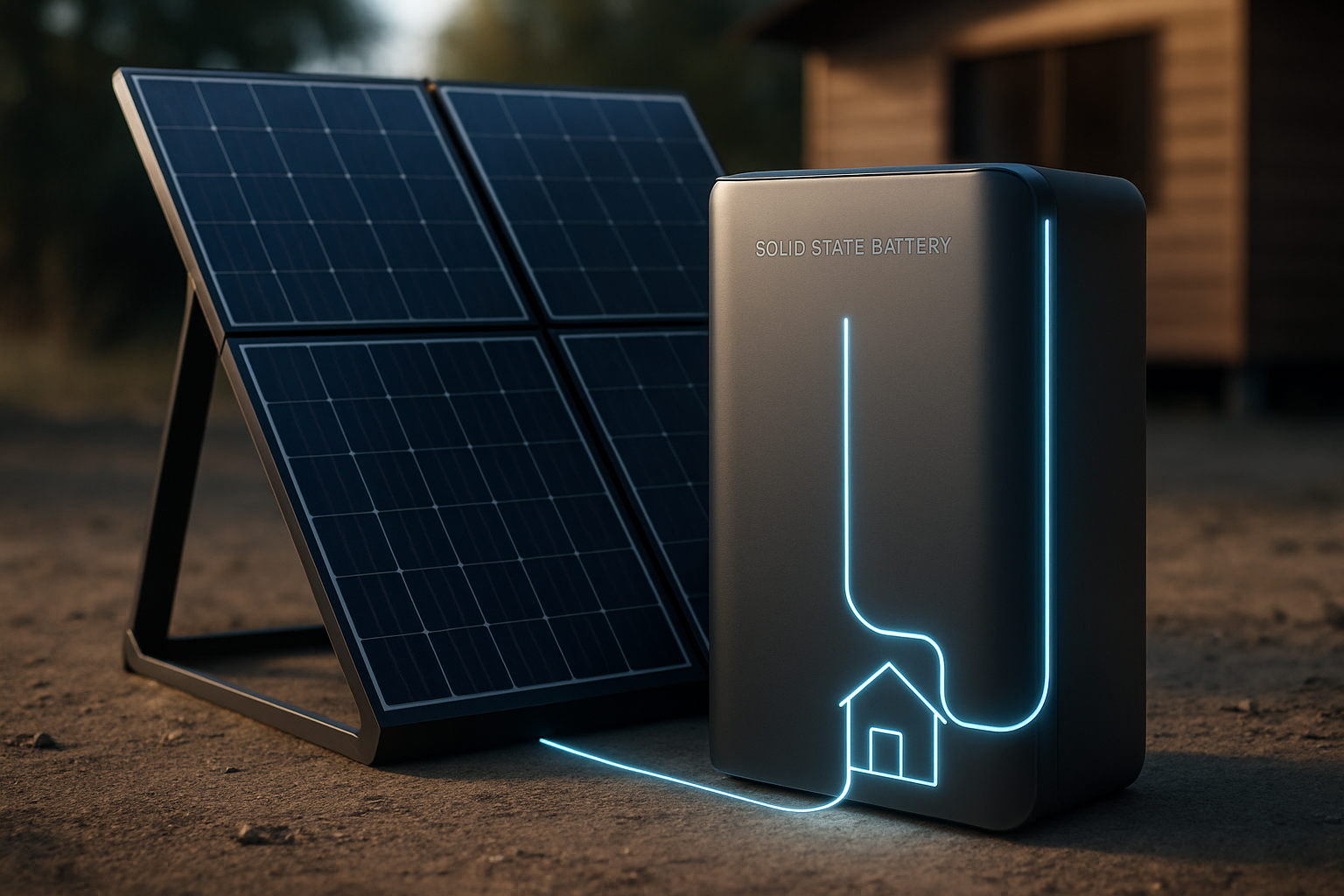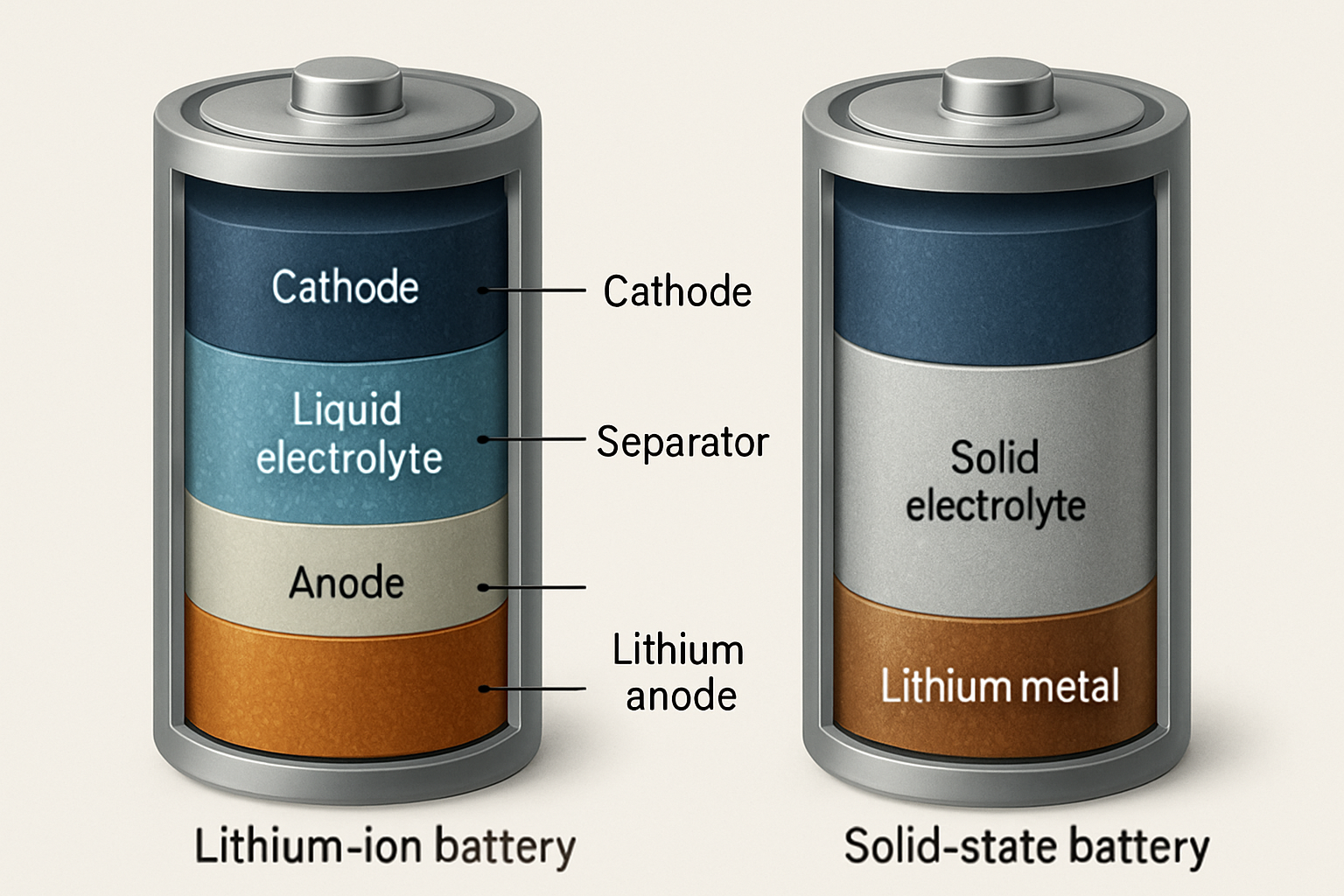The evolution of battery technology centers on a simple goal: storing more energy in less space. This fundamental concept is measured by energy density, a critical factor that defines a battery's capacity, size, and weight. As we look toward the next generation of energy storage, solid-state batteries present a significant leap forward, promising to deliver much higher energy density than current lithium-ion technologies. This advancement is poised to reshape residential and off-grid power systems.
Understanding Energy Density: The Core of Battery Performance
Energy density is the amount of energy a battery can store relative to its size or weight. It's a key indicator of a battery's efficiency and practicality. A higher density means more power is available from a smaller, lighter battery pack. This metric is crucial for everything from portable electronics to entire home battery storage systems.
Gravimetric vs. Volumetric Density
Battery specialists refer to two types of energy density. Gravimetric energy density is the measure of energy per unit of mass, typically expressed in watt-hours per kilogram (Wh/kg). Volumetric energy density measures energy per unit of volume, expressed in watt-hours per liter (Wh/L). For stationary applications like a home energy storage solution, volumetric density is particularly important because it determines the physical footprint of the system. A battery with high volumetric density can store more power without taking up valuable space.
Why Higher Density is a Game-Changer
For homeowners and those living off-grid, the benefits of increased energy density are direct and tangible. A more compact home battery storage system is easier to install and fits into more locations. For mobile applications like RVs or marine use, a lighter lithium battery pack improves fuel efficiency and handling. Ultimately, higher density allows for greater energy independence with a smaller physical and environmental footprint.
Solid-State vs. Lithium-Ion: A Density Showdown
The primary difference between solid-state and conventional lithium-ion batteries lies in the electrolyte—the medium that allows ions to flow between the anode and cathode. Replacing the liquid or gel-polymer electrolyte in lithium-ion batteries with a solid material unlocks significant performance gains, especially in energy density.
The Numbers Behind the Power
Current lithium-ion technologies, while effective, are approaching their theoretical limits for energy density. Solid-state technology breaks past these barriers. The International Energy Agency (IEA) notes that innovations in battery chemistry are critical for the clean energy transition. Solid-state designs represent one of the most promising pathways.
| Feature | Lithium Iron Phosphate (LiFePO4) | Conventional Lithium-Ion (NMC/NCA) | Solid-State (Projected) |
|---|---|---|---|
| Gravimetric Density (Wh/kg) | ~150-170 | ~200-270 | 400-500+ |
| Volumetric Density (Wh/L) | ~350-450 | ~600-750 | 1000+ |
| Key Advantage | Safety & Lifespan | Mature Technology | Density & Safety |
The data shows that solid-state batteries have the potential to store at least twice the energy of a similarly sized lithium iron phosphate battery 12v, which is a common choice for solar energy storage systems today.
How Solid-State Achieves Higher Density
The density improvement comes from several design efficiencies. The solid electrolyte acts as its own separator, eliminating the need for a separate component used in lithium-ion cells. This solid layer is much thinner and more stable, allowing for the use of a high-capacity lithium metal anode. According to the U.S. Department of Energy, advancing solid-state technology is a key initiative because it enables this use of energy-dense lithium metal, which is not feasible with the flammable liquid electrolytes in conventional batteries. This combination of a more compact internal structure and more energetic materials results in a battery that packs much more power into the same volume.
The Practical Impact of Doubled Energy Density
The theoretical benefits of higher energy density translate into powerful real-world advantages for energy storage solutions. This isn't just an incremental improvement; it represents a fundamental shift in how we can deploy and use stored power.
More Power, Less Space for Home Systems
Imagine a home battery storage system with 20 kWh of capacity. With current technology, this requires a sizable unit mounted on a wall or in a garage. A solid-state system could offer the same 20 kWh in a package half the size, or it could pack 40 kWh into the same footprint. This makes powerful energy storage accessible to homes with limited space and simplifies the installation process.
Redefining Off-Grid and Mobile Power
For off-grid solar solutions, RVs, and marine applications, both weight and space are at a premium. A lighter deep cycle lithium battery reduces the overall weight of a vehicle, improving efficiency. For a remote cabin, a more compact and energy-dense battery is easier to transport and install. A solid-state lithium battery pack could provide the same power as a traditional 12v 100ah lifepo4 lithium battery at a fraction of the weight, extending range and capability.
Enhancing Overall System Performance
Higher energy density contributes to better overall performance. As detailed in the ultimate reference for solar storage performance, key metrics like C-rate (charge/discharge speed) and depth of discharge are tied to a battery's core construction. A denser battery using advanced materials can often support higher power output without the same level of degradation, allowing it to run more demanding appliances and charge faster.
Beyond Density: Complementary Solid-State Advantages
While the leap in energy density is a primary benefit, solid-state technology offers other significant improvements that make it a superior choice for future energy storage. These advantages work together to create a safer, more durable, and more efficient battery.
A Foundation of Safety
Perhaps the most critical advantage is safety. The solid electrolyte is non-flammable and far more stable at high temperatures than the liquid electrolytes used in lithium-ion batteries. This design drastically reduces the risk of thermal runaway and fire, a primary concern with traditional battery technologies. This inherent safety makes solid-state batteries an ideal candidate for residential use, where safety is paramount.
Longevity and Efficiency
Solid-state batteries are also projected to have a longer lifespan. The rigid solid structure helps prevent the formation of dendrites—tiny, needle-like structures that can grow inside lithium-ion batteries and cause short circuits, reducing their lifespan. By inhibiting dendrite growth, solid-state cells can endure more charge and discharge cycles, leading to a lower total cost of ownership over the life of the energy storage system. The International Renewable Energy Agency (IRENA) highlights that innovations leading to longer-lasting batteries are essential for making energy storage economically viable for widespread adoption.
A Glimpse into the Future of Energy Storage
The promise of doubling energy density is a transformative prospect for the energy storage industry. Solid-state technology offers a clear path toward smaller, lighter, and more powerful batteries. This isn't just a theoretical exercise; it translates directly into more practical and capable energy storage solutions for homes, businesses, and mobile applications. While the trusted 100ah lithium ion battery serves today's needs reliably, the advancements in solid-state density are paving the way for the next generation of energy independence.
Frequently Asked Questions
Does higher energy density mean higher power output?
Not necessarily directly, but they are related. Energy density (Wh/kg) is about storage capacity, while power density (W/kg) is about how quickly that energy can be delivered. Solid-state designs often improve both, allowing for systems that can run more demanding appliances.
How does solid-state density compare to a 12V 100Ah LiFePO4 battery?
A standard 12V 100Ah LiFePO4 battery contains about 1280 Watt-hours (Wh) of energy in a specific size and weight. A future solid-state battery with the same capacity could be significantly smaller and lighter, potentially half the weight, making it far more versatile for various applications.
When will these high-density batteries be available for home solar?
While prototypes and specialized applications exist, widespread commercial availability for residential solar energy storage systems is still several years away. Manufacturing needs to scale, and costs need to decrease to be competitive with current lithium iron phosphate battery technology.





Leave a comment
All comments are moderated before being published.
This site is protected by hCaptcha and the hCaptcha Privacy Policy and Terms of Service apply.